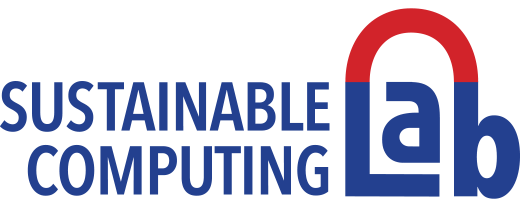Olha, would you be so kind and introduce yourself and your project?
My name is Olha Drozd. I am a project related research associate at theInstitute of Management Information Systems, working on the SPECIAL (Scalable Policy-aware Linked Data Architecture For Privacy,Transparency and Compliance) project a Research and Innovation Actionfunded under the H2020-ICT-2016-1 Big Data PPP call (http://specialprivacy.eu/). At the moment, together with my colleagues,I am working on the development of the user interface (UI) for theconsent request that will be integrated into the privacy dashboard.
Would you please explain the privacy dashboard?
With the help of the privacy dashboard users would be able to access the information about what data is/was processed about them, what is/was the purpose for the data processing, and what data processors are/were involved. The users would also be able to request correction and erasure of the data, review the consent they gave for the data processing and withdraw that consent.
We have two ideas of how this dashboard could be implemented:
- Every company could have their own privacy dashboard installed on their infrastructure.
- The privacy dashboard could be a trusted intermediary between a company and a user. In that case we would have different companies that are represented in a single dashboard.
As I mentioned in the beginning, I am concentrating on the development of different versions of UI for the consent request that could be integrated into the dashboard. Our plan is to test multiple UIs with the help of user studies to identify better suitable UIs for different contexts. At the moment we are planning to develop two UIs for the consent request.
Olha, would you please tell us more about the consent request?
Before a person starts using an online service he/she should be informed about:
- What data is processed by the service?
- How is the data processed?
- What is the purpose for the processing?
- Is the data shared and with whom?
- How is the data stored?
All this information is presented in a consent request, because the user has not only to be informed but has to give his/her consent to the processing of his/her data. We are now aiming to create a dynamic consent request, so that users have flexibility and more control over giving consent compared to all-or-nothing approach that is used by companies today. For example, if the person wants to use wearable health tracking device (e.g. for a FitBit watch) but he/she does not want to have an overview of the statistics of all day heart rate but just activity heart rate, then he/she could allow collection/processing of the data just for the purpose of displaying activity heart rate. It should be also possible to show only the relevant information for the specific situation to the user. In order to ensure that the user is not over burdened with consent requests we are planning to group similar requests into categories and ask for consent once per category. Additionally, it should be possible to adjust or revoke the consent at any time.
At the moment, the main issue for the development of the consent request is the amount of information that should be presented to and digested by a user. The general data protection regulation (GDPR) requires that the users should be presented with every detail. For example, not just the company, or the department that processes the information – the users should be able to drill down through the info. In the graph below you can see an overview of the data that should be shown to users in our small exemplifying use case scenario where a person uses health tracking wearable appliance [1]. You can see how much information users have to digest even in this small use case. Maybe for some people this detailed information could be interesting and useful, but if we consider the general public, it is known that people want to immediately use the device or service and not spend an hour reading and selecting what categories of data for what purpose they can allow to be processed. In our user studies we want to test what will happen if we give users all this information.
Olha, you have mentioned that you were palnning to develop two UIs for the consent request. Would you explain the differences between those two?
One is more technical and innovative (in a graph form) and the other one is more traditional (with tabs, like in a browser). We assume that the more traditional UI might work well with older adults and with people who are not so flexible in adapting to change, new styles and new UIs. And the more innovative one could be more popular with young people.
[1] Bonatti P., Kirrane S., Polleres A., Wenning R. (2017) Transparent Personal Data Processing: The Road Ahead. In: Tonetta S., Schoitsch E., Bitsch F. (eds) Computer Safety, Reliability, and Security. SAFECOMP 2017. Lecture Notes in Computer Science, vol 10489. Springer, Cham

